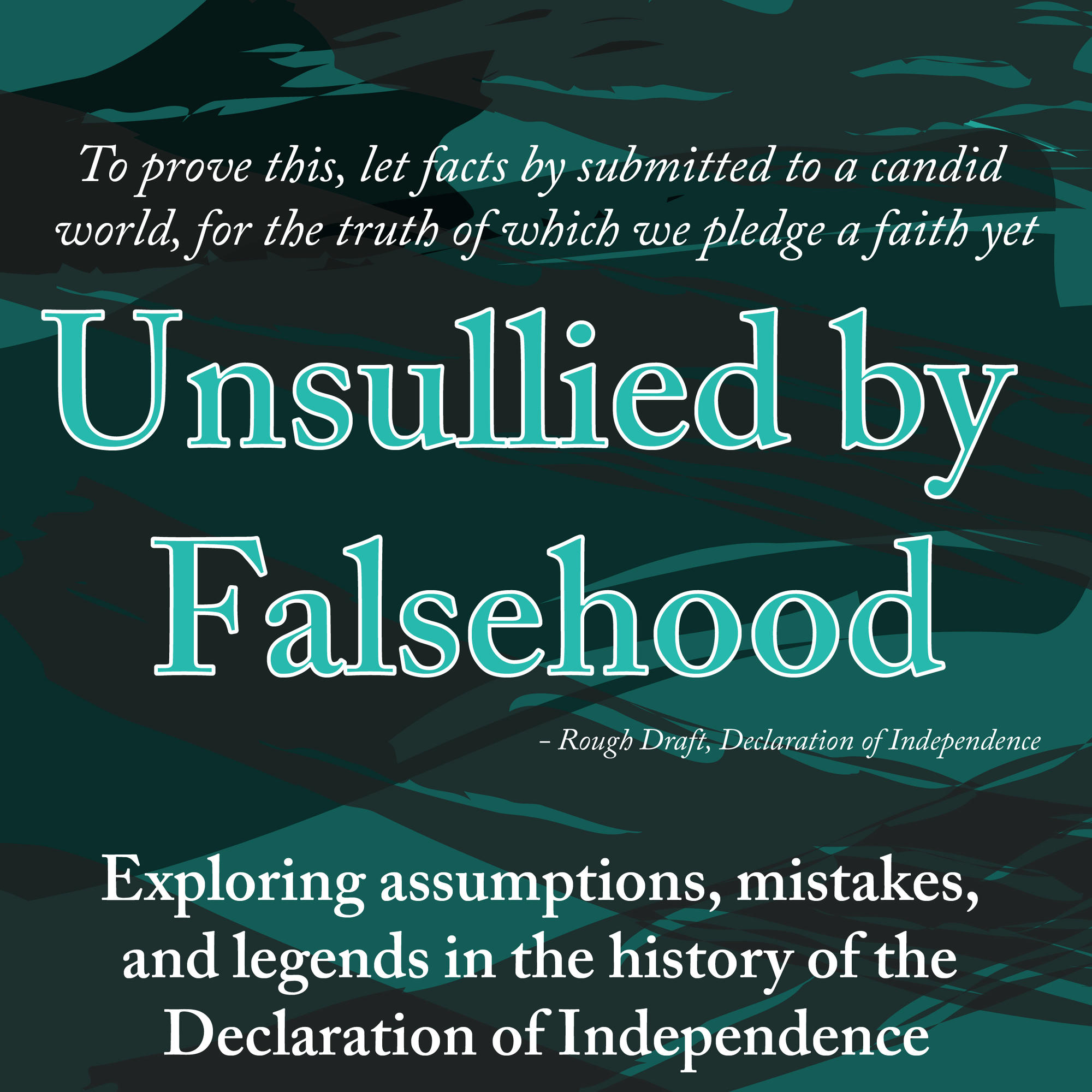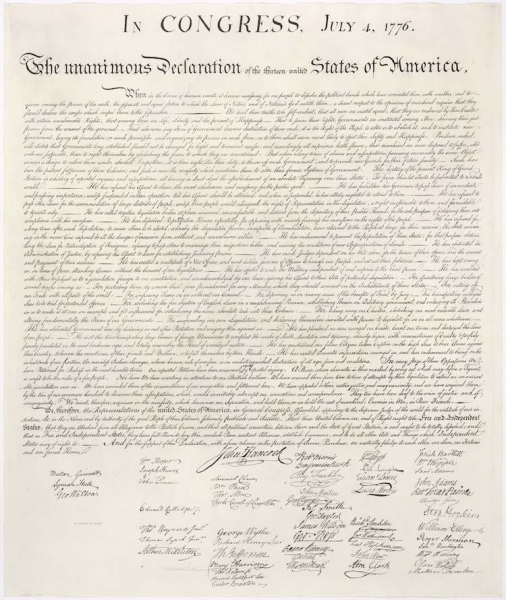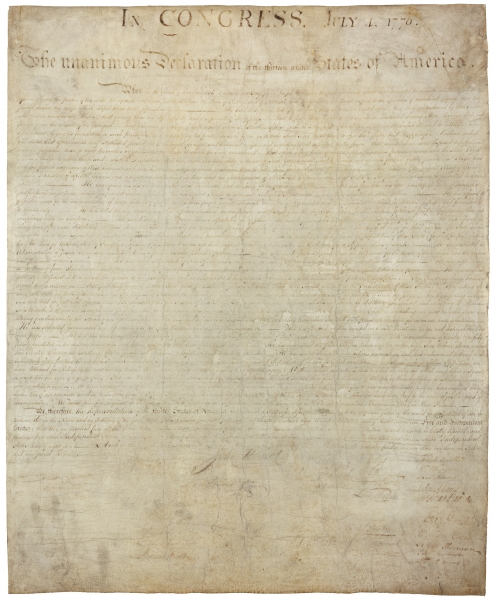 This is the first entry in a new series called "Unsullied by Falsehood" exploring assumptions, mistakes, and legends in the history of the Declaration of Independence. The series title is inspired by a cut phrase from the Rough Draft of the Declaration of Independence: "To prove this, let facts be submitted to a candid world, for the truth of which we pledge a faith yet unsullied by falsehood."
This is the first entry in a new series called "Unsullied by Falsehood" exploring assumptions, mistakes, and legends in the history of the Declaration of Independence. The series title is inspired by a cut phrase from the Rough Draft of the Declaration of Independence: "To prove this, let facts be submitted to a candid world, for the truth of which we pledge a faith yet unsullied by falsehood."
As we near July 4th and the 240th anniversary of the Declaration of Independence, a familiar image will circulate and pop up in the minds of most Americans.

This is not the original parchment of the Declaration of Independence, engrossed by Timothy Matlack and signed by 56 delegates. Today, that parchment looks like this:

The clearer, crisper image is actually an engraving made by William J. Stone in 1823. It is generally accepted that the Stone engraving is an exact facsimile of the original parchment, because Stone used the original to create his engraving. His method of reproducing the engrossed and signed parchment has been the topic of heated debate -- some believe he used a wet transfer process, which removed ink from the original parchment and worsened its already-faded condition, some believe he was a skilled enough engraver to use other copying methods. Regardless, the Stone engraving has usurped the original parchment in our collective imagination as the image of the Declaration of Independence.
However, closer examination of the engrossed and signed parchment reveals that the Stone engraving is not an exact facsimile of the original parchment.... Read more about Unsullied by Falsehood: Exact Facsimiles of the Declaration of Independence